Greta Garbo – 10 Interesting Facts about Her Life and Career
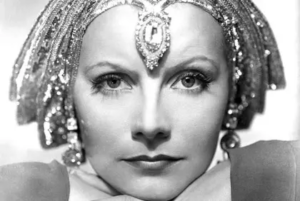
Greta Garbo as Mata Hari, fot. C. S. Bull
“The story of my life is about back entrances, side doors, secret elevators and other ways of getting in and out of places so that people won’t bother me,” – Greta Garbo said of herself. The star was the most mysterious figure in the Hollywood firmament. The beauty from Scandinavia, who was given the nickname “divine,” became the screen personification of the ideal woman and set standards that no one else could reach. After quitting film at the age of 36, she wished to keep her privacy to herself alone for the next fifty years. Paradoxically, however, Garbo’s mysteriousness fueled the fascination of successive generations of viewers with her. Here are some interesting facts about the life and career of this great actress.
1. There are several versions on the artistic pseudonym of Greta Garbo.
The world-famous divine Greta was born in Stockholm in 1905 as Greta Gustafsson. However, while still in Sweden, the young actress took her first steps in film, and decided to adopt the artistic pseudonym that was to become one of the world’s most famous names: Garbo. On December 4, 1923, Greta Gustafsson’s new identity was officially registered with the Swedish Ministry of Justice. To this day, biographers of the actress argue about the circumstances under which the pseudonym was created. There are several versions of the incident. However, most of the clues lead to the person of Mauritz Stiller, the great champion of Garbo, who was not only her discoverer, but also a mentor and advocate of the Swede’s talent. He is said to have taken the nickname for his muse from the Hungarian king Gabor Bethlen (For more on this, see Greta Garbo – history of the famous nickname).
2. Garbo owed her phenomenal film shots to one cameraman: William Daniels.
Many aspects contributed to Greta Garbo’s legend, one of which was certainly the star’s unheard-of photogenicity, skillfully displayed by her regular cameraman William Daniels. The specific method of photographing the actress was passed on to him by Mauritz Stiller, who brought Garbo to Hollywood and initially steered her career. Garbo performed best in close-ups, especially in a semi-recumbent position. It was these shots that created the immortal Face of the divine Greta, about whom Stiller rightly said that such a face “only happens once a century.” In addition, the cinematographer often filmed Garbo’s entire figure, in a melancholy, characteristic movement: with a slight squat and leaning one arm forward. Rarely, however, was the actress shown in semi-close-ups. Garbo undoubtedly owed her best phenomenal shots to William Daniels. She collaborated with him on as many as 19 of her 24 American films.
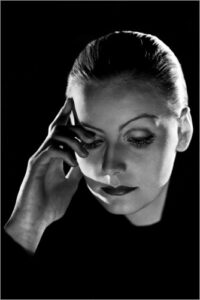
Garbo as Mata Hari
3. Greta Garbo had a big-foot complex, which became the subject of many press jokes.
Garbo struggled with one complex throughout her career: big feet. Actually, it is not known how it arose, since the actress wore shoe size 7AA, or 38, which is completely standard. With her tall height (171 cm), this was really a normal measurement. However, the actress had a habit of wearing very specific footwear, usually wide brown moccasins. In private, she never put on heels, and on the set she always walked in slippers. A funny anecdote from the time when the actress was not yet fluent in English even stuck in the memory of her co-workers. Namely, before shooting each scene she would ask: “will the foot be visible?”. The story with the allegedly large size of her feet, however, quickly got through to the public and became the object of frequent jokes. Even after her career ended, Garbo was upset by a signboard advertising one of the shoe stores in New York, which, referring to the star, proclaimed roughly: “we can find a size for every foot, even Garbo’s.”
4. Garbo’s clothing style was created by Adrian.
Greta Garbo was famous in Hollywood for her complete disregard for appearance and clothing. She felt best in rather masculine styles: no makeup, comfortable moccasins, pants and a drawn-out sweater. She herself said in an interview: “I don’t care about outfits. (…) Off the set, I don’t think about how I’m dressed. (…) I like simple life, simple outfits. I like to have time to do nothing.” Of course, this approach to closet also quickly became a style – for it can be said that it was Garbo who launched the fashion in America for women to wear wide-legged pants and jackets.
Her eminently feminine screen image, however, was created by one designer: Gilbert Adrian. It was he who came up with the costumes in which she appeared in 17 of her films. The gorgeous backless llama gown with metallic leggings in which she appeared in “Mata Hari” certainly went down in cinema history. Garbo’s outfits from “Camille” are equally phenomenal, and also symbolic. Garbo was also famous for her extravagant headgear, in which she looked extremely original. Adrian, on the other hand, also had the advantage of being able to work perfectly with the star, sensing her changing moods.
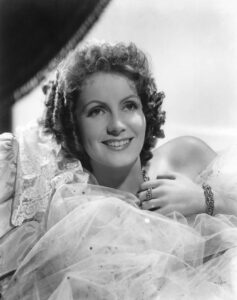
5. Greta Garbo had phenomenal blue eyes, but she was never filmed in color.
Unfortunately, we are not aware of Greta Garbo’s filmed shots in color. All too soon she decided to abandon cinema, depriving audiences of the pleasure of seeing her beautiful blue eyes. William Daniels, her leading cinematographer, in 1969 described the uniqueness of her gaze this way: “The saddest event of my professional path is that I could not photograph her in color. I begged the label. I felt I had to immortalize those incredibly blue eyes on color film, but they refused. At the time, it was a labor-intensive and expensive process, and films were supposed to make money.”
6. Divine Greta most often played a death scene in films.
The divine Greta died in as many as six of her films, and producers and directors used to say that audiences loved to watch “the suffering Garbo.” The actress brought something metaphysical to the big screen, which was particularly evident in the scenes of agony she played. Two great film moments in particular have gone down in cinema history. The one from “Mata Hari,” when the heroine, dressed in black, with her hair sleekly pulled back, makes her way, assisted by guards, to the place of execution, is an extremely monumental image reminiscent of great historical martyrs like Joan of Arc. The other famous film death of Greta Garbo, on the other hand, is a scene from “Camille” when the actress, dressed in white, dies in the arms of her beloved like a pure angel flying up to heaven.
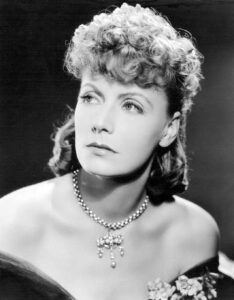
7. The iconic Greta Garbo film question was the text: “I want to be alone.”
“I want to be alone” – a phrase repeated by Greta Garbo in many films – became an integral part of her legend. Screenwriters made it a kind of play with the audience, weaving it into the actress’s spoken film lines. Sometimes it appeared as a paraphrase, such as in “The Single Standard” – Garbo’s character says to a random stalker who offers her an umbrella in the rain: “I walk alone because I want to.” This sentence resonated with the attitude of a star famous for avoiding the press and publicity. Garbo’s mysteriousness was often quoted in articles about her with the very mentioned text. Once, already after the end of her career, a funny situation even happened to her related to it. Namely, when Garbo was basking on the beach confident that no one recognized her, after a while she noticed that a small crowd had gathered behind her, which, when she turned around, as if on command shouted her the famous “I want to be left alone.”
8. Garbo made the most films with Clarence Brown.
Garbo not only had her favorite cinematographer, but also director. The most films with the star were made namely by Clarence Brown. These were as many as seven of her 24 American pictures. Among them: “Flesh and the Devil” (1926), “A Woman of Affairs” (1928), “Anna Karenina” (1935) and “Conquest” (1937). The director knew how to frame shots brilliantly, and was famous for his unheard-of skill in handling light. For this reason he was called Rembrandt. However, Garbo’s most outstanding creations came from her collaborations with Edmund Goulding (“Grand Hotel“) and George Cukor (“Camille”). Unfortunately, the latter also directed the film that Garbo called her grave: “Two-Faced Woman.” After this unsuccessful performance, the star never faced the camera again.
9. Greta Garbo loved the color pink and all its shades.
Greta Garbo’s favorite color was pink, which always dominated all her Hollywood homes, and later in her New York apartment at 450 East Fifty-second Street, where she spent nearly 40 years. There were pink curtains, salmon-colored walls and Savonnerie-style carpets. Even in choosing her paintings, Garbo was guided not so much by artistic or commercial value as by color. Pink had to dominate. She also liked to wear a pink or salmon-colored jacket and pants to lavish parties.
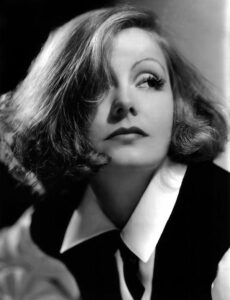
Greta Garbo, fot. Donaldson Collection/ Getty Images
10. The divine Greta was very fond of an active lifestyle and sports.
Greta Garbo brought to America a love of long walks and an active lifestyle. Every day, even in her old age, she covered several kilometers, and a pastime she was even fond of was playing tennis. She also enjoyed horseback riding and was an excellent swimmer. Interestingly, despite her obsession with her privacy, she had no shadow of prudery about her. She very often swam and sunbathed naked. She took a keen interest in healthy lifestyles and innovative methods of exercise, although at the same time she was unable to renounce her smoking habit. In planning her activities, she always put comfort and practicality first, rather than her physical appearance.
She even took this trait to the extreme. She didn’t recognize handbags, for example, but carried essentials in a small commercial from which it was easy to take something out. Her screen image of a woman passionate about jewelry or fashion was completely incompatible with her real-life personality. What did adhere to her, however, was the inexplicable charm she truly cast, not only on viewers, but also on anyone who came into contact with her.
Literature:
B. Paris, “Garbo: A Biography”, 1995.
D. Bret, “Greta Garbo”, 2012.
